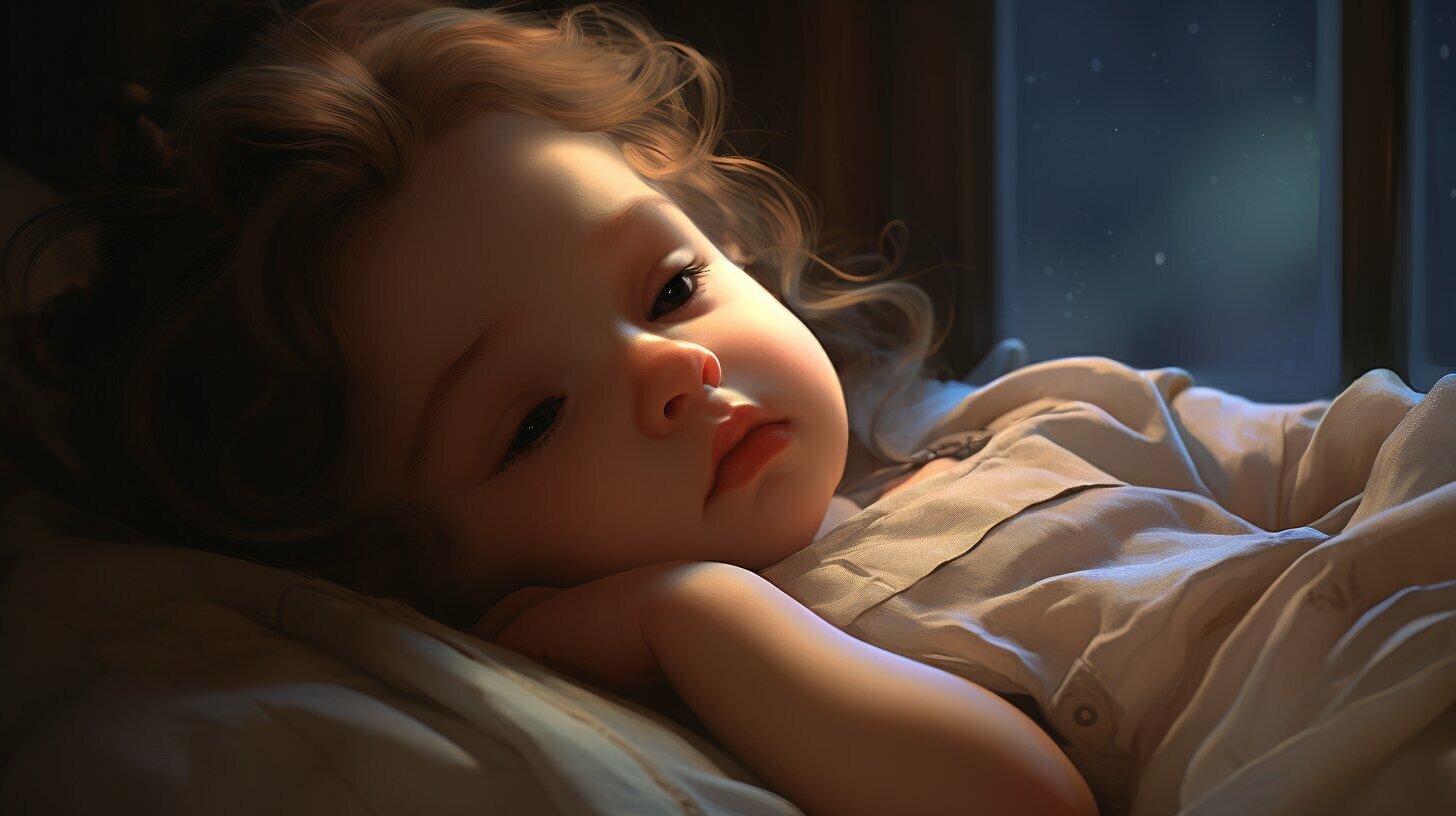Crying in their sleep can be unsettling for parents, but it is a common occurrence among babies and young children.
Understanding why a child cries in their sleep can give parents valuable insights into their little one’s needs and help them provide the necessary support and comfort.
Babies and young children have different sleep patterns compared to adults. They spend a significant amount of time in rapid eye movement (REM) sleep, which is when they dream.
During REM sleep, babies may appear unsettled, their eyes might move behind their eyelids, and they may jerk or twitch. These movements and behavioural cues can sometimes lead to crying in their sleep.
Transitions between sleep stages can also contribute to a child crying during their sleep. As they move from deep to lighter sleep or enter REM sleep, they may wake up momentarily, resulting in tears and fussiness.
Mental and developmental leaps are another factor that can impact a child’s sleep and cause them to cry during sleep. These leaps involve significant cognitive and physical growth, and the associated changes in their brain and body can lead to temporary sleep disturbances.
While nightmares and night terrors are more common in older children, they can occasionally affect babies and young children as well. These sleep disturbances can cause a child to wake up crying or screaming during the night.
Parents play a crucial role in comforting and soothing their children when they cry in their sleep. Talking softly, gently rubbing their back, or offering a pacifier can help calm their little one and provide reassurance.
Key Takeaways:
- Crying in sleep is a common occurrence among babies and young children.
- Babies spend more time in REM sleep, which is when they dream.
- Transitions between sleep stages can cause temporary awakenings and crying.
- Mental and developmental leaps can disrupt a child’s sleep patterns.
- Nightmares and night terrors may occasionally affect babies and young children.
- Parents can provide comfort and support to soothe their child during sleep crying episodes.
- Consulting a healthcare professional is necessary for persistent sleep disturbances or concerning symptoms.
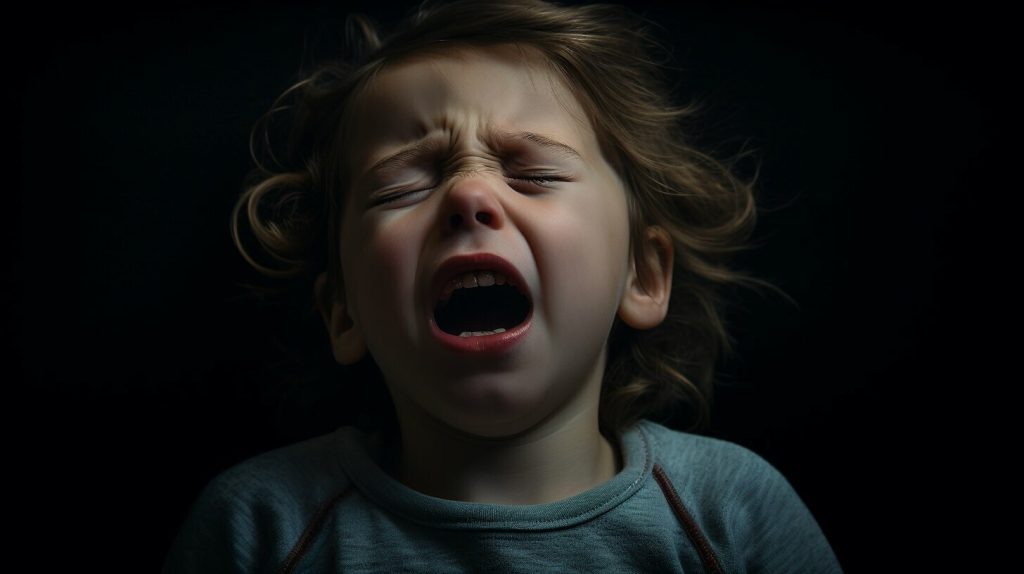
Normal Sleep Patterns in Babies and Children
To understand why children cry in their sleep, it is important to recognise that their sleep patterns differ from those of adults.
Babies and young children have unique sleep patterns that contribute to their crying during sleep. The most notable difference is their increased time spent in rapid eye movement (REM) sleep, the stage where dreaming occurs.
During REM sleep, babies may appear unsettled, their eyes moving behind their eyelids, and they may experience jerking or twitching movements.
This stage can cause them to become easily awakened and may lead to crying episodes during sleep. Babies also transition between different sleep stages more frequently than adults, which can sometimes disrupt their sleep and trigger crying spells.
In addition to sleep patterns, mental and developmental leaps can impact a child’s sleep and contribute to crying during sleep.
As babies go through various leaps in their cognitive and physical development, their sleep patterns can be temporarily disturbed. These leaps can result in more frequent night awakenings and increased crying during sleep.
Why Your Child Cries In Their Sleep Video Guide
The Impact of Rapid Eye Movement (REM) Sleep
Rapid eye movement (REM) sleep plays a significant role in a child’s sleep and dreaming. It is during this stage that most of their crying episodes occur. REM sleep is characterised by increased brain activity and vivid dreams, which can make babies more prone to emotional expressions such as crying.
Nightmares and night terrors can also contribute to crying during sleep, although they are more common in older children.
Nightmares are disturbing dreams that can cause a child to wake up feeling scared or upset, while night terrors are intense episodes of fear that can cause a child to cry or scream inconsolably during sleep.
While crying in sleep is generally considered normal for babies and young children, parents can play a crucial role in providing comfort and support.
Talking softly to the child, gently rubbing their back, or offering a comforting object can help soothe them back to sleep.
However, if there are persistent sleep disturbances or concerning symptoms accompanying a child’s crying during sleep, it is advisable to consult a healthcare professional for further evaluation and guidance.
| Cause | Description |
|---|---|
| REM Sleep | Rapid Eye Movement (REM) sleep, where most dreams occur, can lead to crying episodes in babies and children. |
| Transitioning Between Sleep Stages | As babies transition between sleep stages, they may wake up momentarily and cry before settling back to sleep. |
| Mental and Developmental Leaps | During mental and developmental leaps, a child’s sleep patterns can be temporarily disturbed, leading to increased crying during sleep. |
| Nightmares and Night Terrors | Although more common in older children, nightmares and night terrors can also cause a child to cry during their sleep. |
Understanding the normal sleep patterns of babies and young children can help parents navigate and support their child’s sleep, even when crying episodes occur.
By providing a comforting environment and seeking professional guidance when needed, parents can help their children establish healthy sleep habits.
My 3-year-old child is waking up talking & crying. Could it be nightmares?
Rapid Eye Movement (REM) Sleep
During REM sleep, babies and young children often display unsettled behaviour, including crying. This is because REM sleep is the stage of sleep where most dreaming occurs.
Although it may be disconcerting for parents to witness their child crying during sleep, it is generally a regular part of their sleep cycle.
When babies are in REM sleep, their eyes may move rapidly behind their eyelids, and they may twitch or jerk.
These movements and behaviours are a natural part of their brain development and should not cause concern. Crying in their sleep during REM sleep can be seen as a normal expression of their dreams or the emotions they may be experiencing during this stage.
While it is normal for babies to cry during REM sleep, there are techniques that parents can use to soothe their child and provide comfort.
Talking softly or gently rubbing their back can help calm them down and potentially help them settle back into a deeper sleep. It is important for parents to remain calm during these episodes and provide a reassuring presence for their child.
| Please Consider: |
|---|
|
By providing comfort and reassurance, parents can help their child navigate through these moments and promote better sleep patterns.
However, if there are persistent sleep disturbances or concerning symptoms accompanying a child’s crying during sleep, consulting a healthcare professional is recommended to ensure their well-being.
Moving between sleep stages can occasionally trigger crying episodes in children during sleep.
As babies progress through their sleep cycles, transitioning from one stage to another, they may briefly wake up or stir, leading to moments of distress. This can result in nighttime crying and temporary sleep disturbance.
During these transitions, infants may experience brief awakenings although they are still technically asleep.
These awakenings are often accompanied by crying or fussiness and can last a few minutes before the child drifts back to sleep. It is important to note that these awakenings are a normal part of sleep and should not cause alarm.
To better understand these sleep stage transitions, let’s take a closer look at the stages of sleep. There are two main types of sleep: non-REM sleep and REM sleep.
Non-REM sleep consists of four stages, with each stage progressing in depth. REM sleep, on the other hand, is characterised by rapid eye movements and heightened brain activity, similar to wakefulness.
As babies and young children move between these different sleep stages, they may experience a brief period of partial awakening, triggering temporary crying.
This is particularly common during the transition from REM sleep to non-REM sleep or vice versa. It is during these transitions that infants may wake up slightly and exhibit signs of discomfort or agitation.
While these episodes of crying during sleep can be distressing for the child and their parents, it is essential to remember that they are a normal part of sleep development. Most infants outgrow these sleep disturbances as they mature and develop more stable sleep patterns.
In the meantime, parents can offer comfort and reassurance to their child or baby by gently soothing them through techniques such as softly talking or gently patting their back. A calm and nurturing environment can help the child feel secure and settle back to sleep more easily.
| Stage of Sleep | Description |
|---|---|
| Non-REM Sleep | Consists of four stages, gradually deepening in sleep intensity. |
| REM Sleep | Characterised by rapid eye movements and heightened brain activity, similar to wakefulness. |
“The episodes of crying during sleep that children experience are a normal part of their sleep development. It can be a result of transitioning between sleep stages, such as moving from REM sleep to non-REM sleep or vice versa.” – Sleep Specialist, Dr. Smith.
Crying during sleep is a common occurrence in babies and young children. It is often triggered by the transitions between sleep stages, particularly during the shift from REM sleep to non-REM sleep or vice versa.
While these episodes can be unsettling for both parents and child, they are a normal part of sleep development and tend to resolve as the child ages.
Mental and Developmental Leaps
Children may experience mental or developmental leaps that disrupt their sleep and result in crying episodes during the night.
These leaps refer to periods of rapid cognitive, emotional, and physical growth where children acquire new skills or reach significant developmental milestones.
While these leaps are exciting and important for a child’s progress, they can also impact their sleep patterns.
During these phases, children’s brains are actively processing and assimilating new information, which can lead to increased brain activity even during sleep.
This heightened brain activity may cause children to have more vivid dreams, which can sometimes be unsettling and result in crying episodes.
Additionally, the excitement or frustration that comes with new developmental skills, such as walking or talking, can cause disruptions in their sleep, leading to nighttime awakenings and crying.
To help your child navigate these leaps and minimise sleep disruptions, it’s essential to provide a supportive and comforting environment.
Establishing a consistent sleep routine can help create a sense of security and familiarity, making it easier for your child to transition through these developmental phases.
Additionally, offering reassurance and comfort during nighttime awakenings can help soothe your child to sleep more quickly.
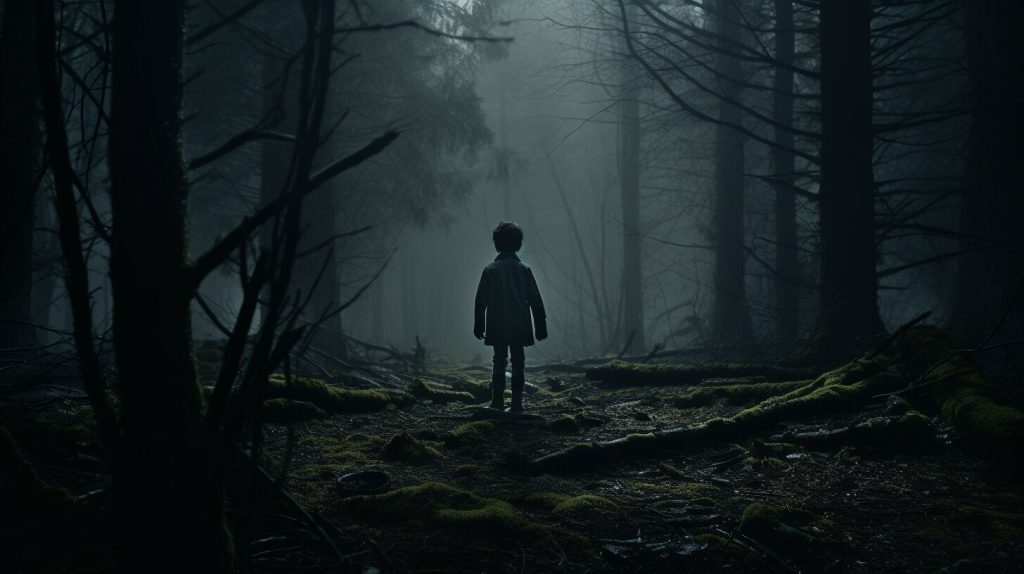
Nightmares and Night Terrors
Nightmares and night terrors can lead to a child waking up crying during their sleep. While these sleep disturbances are more common in older children, babies and young children can also experience them.
Nightmares are frightening dreams that can lead to fear and distress upon waking up. Night terrors, on the other hand, are episodes of intense fear or terror that occur during sleep, usually during the first few hours of the night.
During a nightmare, a child may wake up crying, feeling scared, and have vivid memories of the dream.
Night terrors, however, are different. A child experiencing a night terror may appear inconsolable. They may scream, thrash around, or seem confused and disoriented. Unlike nightmares, children often have little to no memory of the night terrors the following day.
It is important to note that nightmares and night terrors are a normal part of a child’s development and usually resolve on their own over time.
While they can be distressing for both the child and the parent, it is crucial to remain calm and provide reassurance.
| Nightmares | Night Terrors |
|---|---|
| Occur during REM sleep | Occur during non-REM sleep |
| Child may wake up crying and scared | Child may appear inconsolable and confused |
| Child may remember the dream | Child often has little to no memory of the episode |
| Can be triggered by stress, anxiety, or changes in routine | Potentially triggered by fever, illness, or sleep deprivation |
Remember, crying during sleep is usually normal, but if there are additional concerns or persistent sleep disturbances, it is always best to seek professional advice.
By understanding the causes and providing the appropriate support, parents can help their child navigate these episodes and promote better sleep overall.
Parental Role in Soothing Crying in Sleep
There are several strategies parents can employ to soothe their child’s cries during sleep. When a child wakes up crying in the middle of the night, it can be distressing for both the child and the parents.
However, with patience and understanding, parents can help their little ones find comfort and return to sleep.
One effective technique is to offer gentle reassurance and comfort. This can be done by talking softly to the child, using a soothing tone, and providing physical contact such as cuddling or gently rubbing their back.
The warmth and security that a parent’s presence provides can often help calm the child and ease their distress.
Creating a calm and soothing sleep environment is also crucial. Dimming the lights, playing soft lullabies, or using white noise machines can help create a peaceful atmosphere that promotes better sleep.
Additionally, ensuring that the child’s sleep environment is comfortable and conducive to restful sleep, such as maintaining an appropriate temperature and using a supportive mattress, can contribute to a more peaceful night’s sleep.
| Strategies to Soothe a Crying Child During Sleep |
|---|
| 1. Offer gentle reassurance and comfort through soft talking and physical contact |
| 2. Create a calm and soothing sleep environment with dim lights and soothing sounds |
| 3. Ensure the child’s sleep environment is comfortable and conducive to restful sleep |
Parents must remember that crying in sleep is usually a normal part of a child’s development, and it’s not always a cause for concern.
However, if crying episodes become more frequent or are accompanied by other concerning symptoms, it’s advisable to seek guidance from a healthcare professional.
They can help assess the situation, provide further advice, and address any underlying issues contributing to sleep problems in kids.
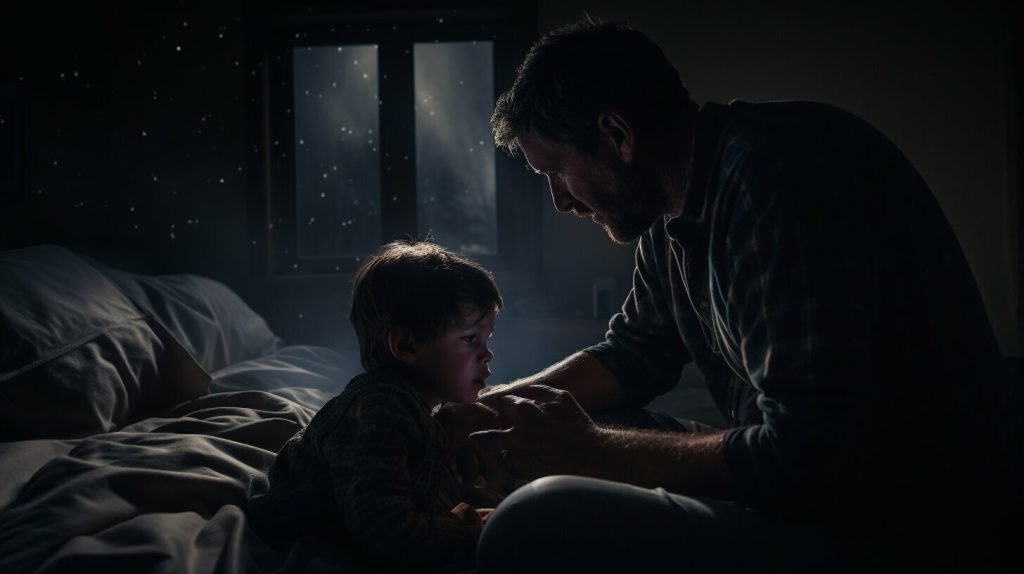
When to Seek Professional Help
Most cases of crying in sleep are harmless, but there are circumstances where professional assistance should be sought.
Persistent sleep disturbances, such as frequent night waking, sleepwalking, or difficulty falling asleep, may indicate an underlying issue that requires further investigation.
Additionally, if your child’s crying is accompanied by fever, difficulty breathing, or a noticeable behaviour change, it is essential to seek medical attention promptly.
These symptoms could be signs of an illness or infection that need to be addressed by a healthcare professional.
It is also important to contact a healthcare professional if your child’s crying during sleep is causing significant distress for both the child and the parents.
| Signs to Seek Professional Help for Crying in Sleep | Reasons for Seeking Help |
|---|---|
| Persistent sleep disturbances | Underlying issues may require further investigation |
| Fever, difficulty breathing, or change in behaviour | Signs of an illness or infection |
| Significant distress for the child and parents | Sleep problems in kids can impact overall well-being and family dynamics |
“While crying in sleep is usually normal, it is essential to trust your instincts as a parent. If you feel that something is not right or if your child’s crying is causing significant concern or distress, do not hesitate to seek professional help. A healthcare professional can provide the necessary guidance and support to ensure your child’s well-being and help you navigate any challenges related to their sleep.”
Remember, every child is unique, and it is important to trust your instincts as a parent. Seeking professional help can provide reassurance and peace of mind, ensuring your child receives the appropriate care and support for their sleep concerns.
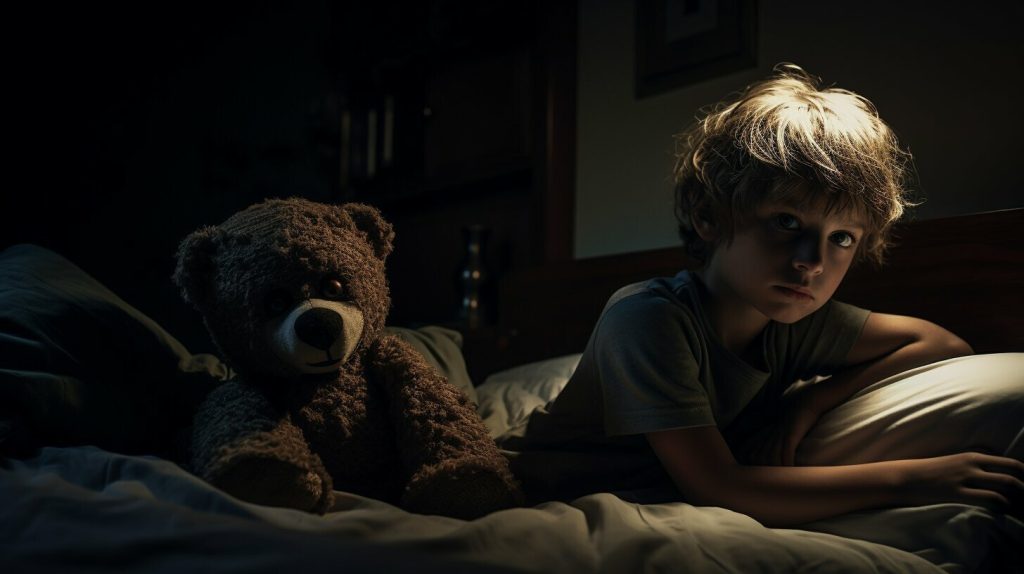
Consulting a Healthcare Professional
If a child’s crying during sleep becomes excessive or is accompanied by other worrying symptoms, it is advisable to consult a healthcare professional.
While crying in sleep is usually an everyday occurrence for babies and young children, there are instances where it may indicate an underlying issue that requires medical attention.
These symptoms could include persistent and intense crying, difficulty breathing, fever, or signs of physical distress. Consulting with a healthcare professional can help identify underlying causes and provide appropriate guidance and treatment.
Parents need to keep track of their child’s sleep patterns and any changes in behaviour or sleep disturbances.
By keeping a sleep diary and noting when the crying occurs, how long it lasts, and any accompanying symptoms, parents can provide valuable information to the healthcare professional.
This information can assist in determining the best course of action and whether further evaluation or testing is necessary.
During the consultation, the healthcare professional will assess the child’s overall health and development, ask relevant questions about their sleep habits and behaviours, and recommend additional tests or evaluations.
They may also provide guidance on sleep routines, comforting techniques, and strategies to address any underlying issues contributing to the crying during sleep.
They can offer support and reassurance to parents, helping them navigate this phase of their child’s sleep development.
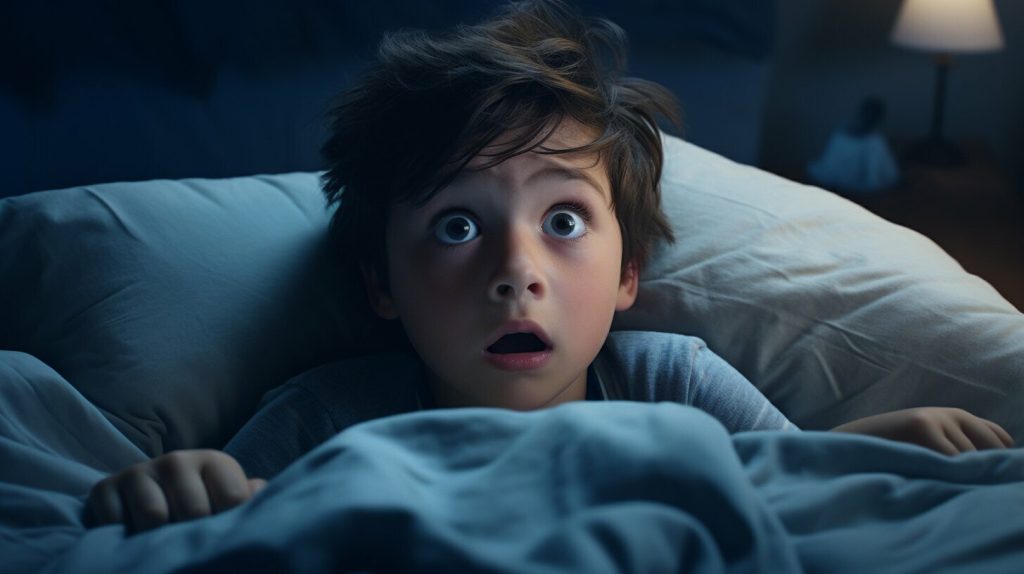
Comforting Techniques
Besides soothing a child through gentle touch and calming words, there are other techniques that parents can use to provide comfort after crying in sleep.
These techniques can help create a sense of security and relaxation, allowing the child to settle back into a peaceful sleep.
One effective technique is swaddling. Wrapping the baby snugly in a soft blanket mimics the feeling of being in the womb, providing comfort and a sense of security.
Be sure to swaddle the baby safely, ensuring their hips and legs are free to move and that the blanket is not too tight around their chest.
Another technique is using white noise or lullabies to create a soothing environment. Soft, repetitive sounds can help drown out external noises and create a calming atmosphere that allows the baby to drift back to sleep.
There are various apps and devices specifically designed for playing white noise or lullabies that can be used in the baby’s sleep environment.
Additionally, introducing a comfort object, such as a soft toy or a small blanket, can provide a source of reassurance and familiarity.
The familiar scent and texture of the object can help the child feel secure, especially during moments of waking or discomfort in their sleep. Be sure to choose a safe and age-appropriate comfort object for the baby.
| Comforting Techniques | Benefits |
|---|---|
| Swaddling | It Mimics the feeling of being in the womb, providing comfort and security. |
| White noise or lullabies | Drowns out external noises and creates a soothing environment for better sleep. |
| Comfort object | Provides a source of reassurance and familiarity during moments of waking or discomfort. |
Remember, every child is unique, so it may take some trial and error to find the comforting techniques that work best for your baby.
By providing a nurturing and supportive environment, you can help your child find comfort and settle back into restful sleep after crying during the night.
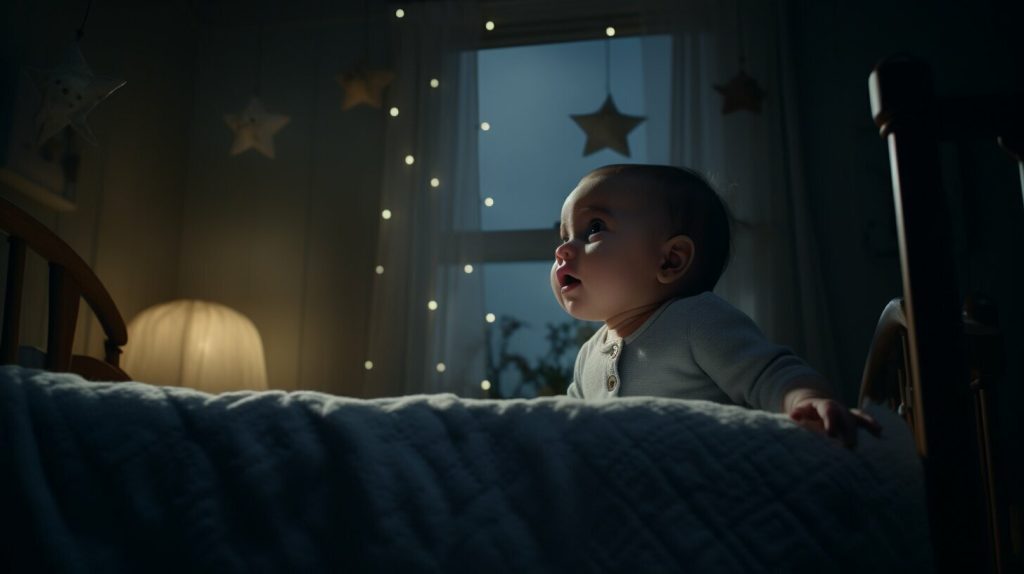
Creating a Sleep Routine
A structured sleep routine can help minimise sleep disturbances and reduce the frequency of crying in a child’s sleep.
Establishing a consistent bedtime routine provides a sense of predictability and security for your child, helping them relax and prepare for sleep.
Here are some key elements to consider when creating a sleep routine:
- Set a consistent bedtime: Choose a bedtime that allows your child to get enough sleep based on age. Consistency is vital, so try to stick to the same bedtime every night.
- Establish calming activities: Incorporate activities that promote relaxation and wind down the body and mind. This could include reading a book together, listening to soft music, or having a warm bath.
- Create a sleep-friendly environment: Ensure the bedroom is conducive to sleep by keeping it cool, dark, and quiet. Consider using blackout curtains, white noise machines, or nightlights if needed.
- Avoid stimulating activities before bed: Limit screen time, especially in the hour before bedtime, as it can interfere with the natural sleep-wake cycle. Engage in quiet, calming activities instead.
- Establish a consistent bedtime routine: Following the same sequence of activities each night can signal your child that it is time to sleep. This could include brushing teeth, putting on pyjamas, and saying goodnight to loved ones.
- Be patient and persistent: It may take time for your child to adjust to a new sleep routine. Stick with it and provide gentle guidance and reassurance as they learn to self-soothe and settle into sleep independently.
By implementing a structured sleep routine, you can create a calm and soothing environment that promotes healthy sleep habits for your child.
Remember, every child is unique, so it’s important to tailor the routine to their individual needs and preferences.
A consistent sleep routine, combined with your love and support, can help minimise sleep disturbances and provide a restful night’s sleep for you and your child.
Table: Sample Sleep Routine
| Time | Activity |
|---|---|
| 6:30 PM | Quiet play or reading time |
| 7:00 PM | Bath time |
| 7:30 PM | Pyjamas and brushing teeth |
| 7:45 PM | Storytime and cuddles |
| 8:00 PM | Goodnight kisses and lights out |
Remember, consistency is key when it comes to implementing a sleep routine. Stick to the same schedule as much as possible, even on weekends, to help regulate your child’s internal body clock.
With time, patience, and a structured sleep routine, you can create an environment that promotes peaceful nights and well-rested days for your child.
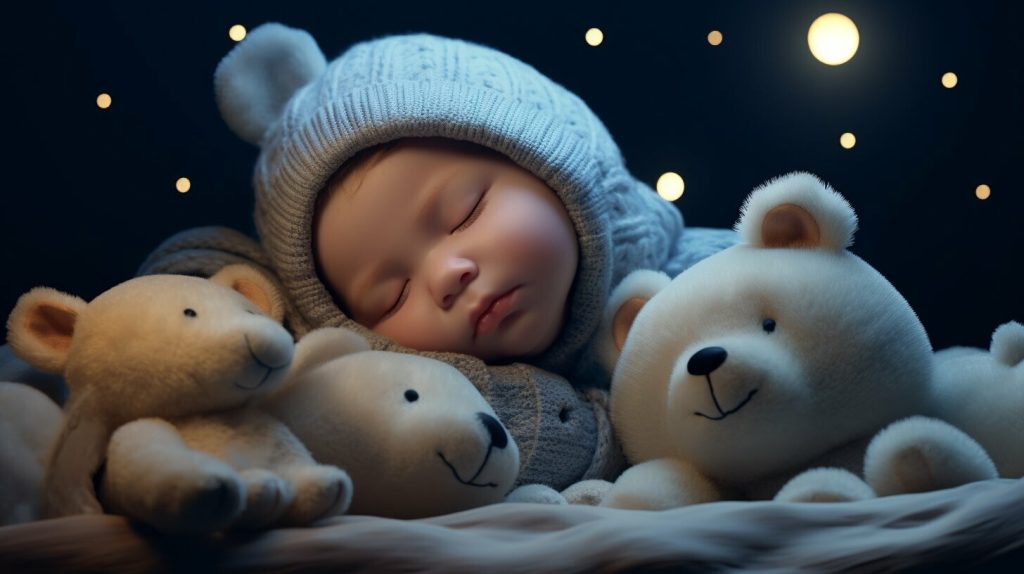
Final Thoughts
Crying in sleep is a normal phenomenon in babies and young children, but parents should always trust their instincts and seek help if they have concerns.
Babies have different sleep patterns than adults, spending more time in rapid eye movement (REM) sleep, which is when they dream. During REM sleep, babies may appear unsettled, their eyes might move behind their eyelids, and they may jerk or twitch.
Crying in sleep can occur when a child is transitioning between sleep stages or going through a mental or developmental leap.
It is also possible for babies to have nightmares or night terrors, although these are more common in older children. However, in most cases, crying in sleep is not usually a cause for concern. Parents can try to soothe their baby by talking softly or gently rubbing their back.
While crying in sleep is usually normal, parents must be aware of any other concerning symptoms or persistent sleep disturbances.
If these occur, it is advisable to consult a healthcare professional who can provide expert guidance and support. Trusting your instincts as a parent and seeking help when needed is crucial in ensuring the well-being and healthy sleep habits of your child.
FAQs
Q: Why does a child cry in their sleep?
Crying in their sleep is normal for babies and young children. It can occur during sleep stage transitions or mental and developmental leaps. Nightmares and night terrors may also contribute.
Q: What are the normal sleep patterns in babies and children?
Babies and children have different sleep patterns than adults. They spend more time in rapid eye movement (REM) sleep, which is when they dream. This can make them appear unsettled and cry in their sleep.
Q: How does rapid eye movement (REM) sleep relate to crying during sleep?
Rapid eye movement (REM) sleep is a significant part of a child’s sleep and dreaming. During this stage, babies’ eyes may move behind their eyelids, and they may jerk or twitch. Crying in their sleep can coincide with REM sleep.
Q: Why does transitioning between sleep stages cause a child to cry during sleep?
Transitioning between sleep stages can disrupt a child’s sleep and lead to crying during sleep. These transitions can be accompanied by brief awakenings or restlessness.
Q: How do mental and developmental leaps affect a child’s sleep?
Mental and developmental leaps can impact a child’s sleep patterns. These leaps involve rapid cognitive, emotional, and physical development, which may disrupt their sleep and cause them to cry during sleep.
Q: Do nightmares and night terrors contribute to crying in sleep?
While nightmares and night terrors are more common in older children, they can also cause younger children to cry during their sleep. These sleep disturbances can lead to brief awakenings and emotional distress.
Q: What role can parents play in soothing crying during sleep?
Parents can help soothe their children when they cry during sleep. Whispering, gently rubbing their back, or offering comforting techniques can help them settle back to sleep.
Q: When should I seek professional help for my child’s crying during sleep?
While crying during sleep is usually normal, persistent sleep disturbances or concerning symptoms may warrant medical intervention. If you are unsure or worried, it’s best to consult a healthcare professional for guidance.
Q: What should I do if my child’s crying during sleep becomes a persistent problem?
If your child’s crying during sleep becomes a persistent issue, it may be helpful to consult a healthcare professional. They can assess the situation and provide guidance and support to address the underlying causes of sleep disturbances.
Q: Are there specific comforting techniques I can try to help my child settle back to sleep after crying in the night?
Yes, there are various comforting techniques that parents can try to help their child settle back to sleep after crying during the night. These can include offering a favourite toy or blanket, providing reassurance through calm voices, and creating a soothing sleep environment.
Q: How important is establishing a sleep routine for my child?
Establishing a consistent sleep routine is essential for children. A sleep routine can help signal their bodies that it is time to sleep, making it easier for them to settle and find comfort. Consistency and structure can contribute to better sleep patterns and reduce instances of crying during sleep.
Q: What is the takeaway message on crying in sleep for babies and young children?
Crying in sleep is normal for babies and young children. It can result from sleep stage transitions, mental and developmental leaps, or occasional nightmares or night terrors. In most cases, parents can provide comfort and support to soothe their child. However, if there are persistent sleep disturbances or concerning symptoms, it is advisable to consult a healthcare professional for further guidance.
